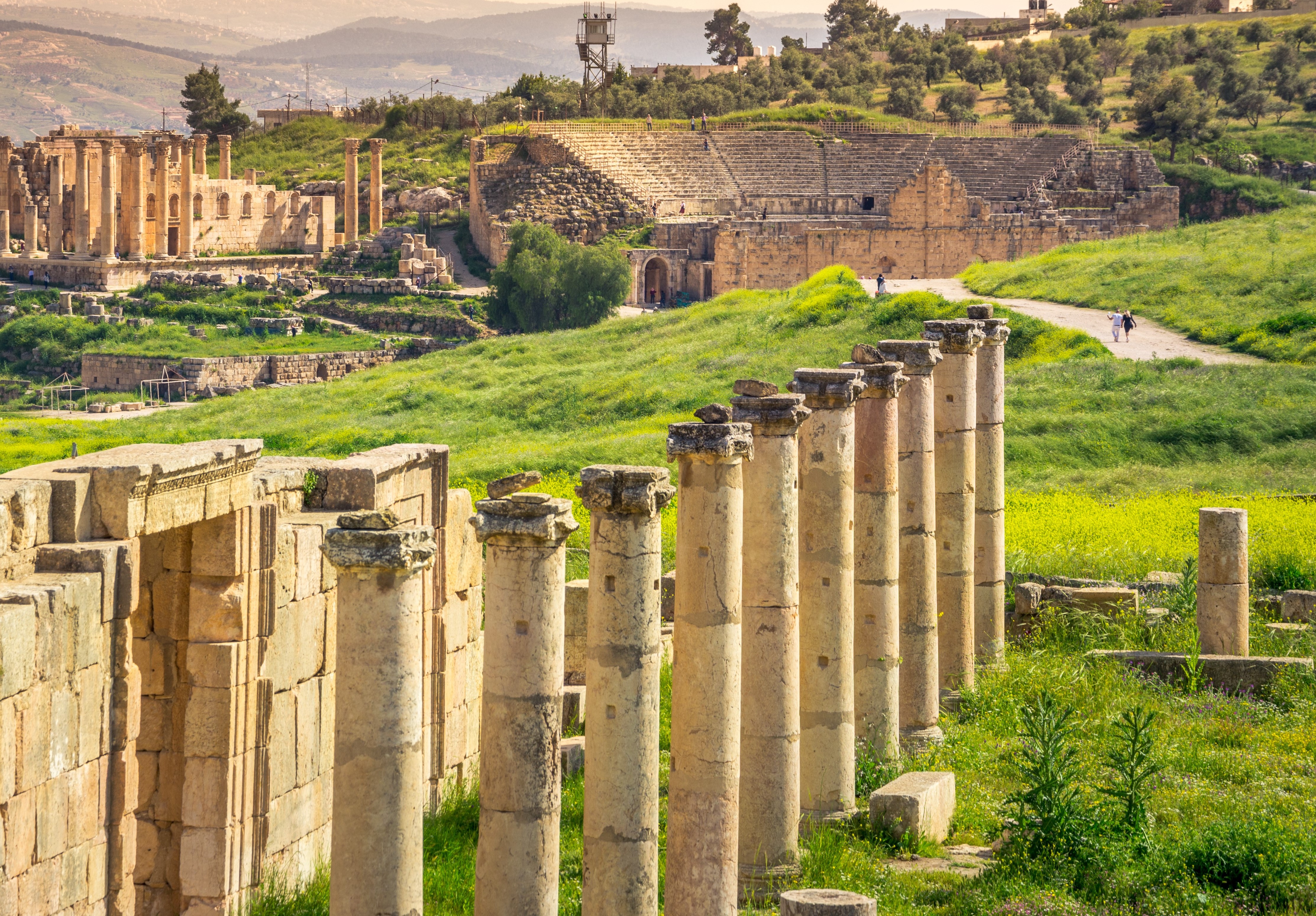

The
archaeological city of Jerash is located within the cultural tourism trails, as
it contains more than 23 churches and its public monuments.
The
number of researchers increased at the beginning of the fourth century, after
the announcement of the Edict of Milan, which gained wide fame among Roman
people.
The
history of Jerash, which is located in the northwestern part of Jordan and is
48 kilometers away from the capital, Amman, tells us that since the first
century before the coming of Christ, it has been subject to the rule of the
Roman leader Pompey. Now it was a model Roman city that was at peace and
settled.
Roman
design of the main street, the axis of the city, with two rows of columns on
either side. It was famous during the pagan Roman era for its famous
structures, and later became famous for its churches.
All
the discovered researchers are Byzantine, characterized by an architectural
plan known as the basilica plan, which is a structural hall with an apse in the
middle facing it to the east, and is divided into three long porticoes called
arcades and called nave, as well as two side porticoes, the south and the
north, which are separated by two sections of columns that carry the arches.
And the ceiling.
Due to
the Department of Antiquities and excavation of 23 churches, the oldest church
of the cathedral was discovered, which dates back to the fourth generation and
consists of the temple area and its three pillars.
Near
the Catholic Church is the Church of Saint Theodore in the year 494-496, and to
the south of it there is a church in which the mosaic writing is mentioned. It
was established as a memorial for the repose of the souls of those who donated
it and in honor of Saint Mary.
The
year 532-529, and it contains three churches: the Church of John, St. George,
and the Church of St. Cosmas and Damian, from which a door leads to the other
church.
The
church is distinguished by the fact that it is founded on three sides and was
built in the form of a circle within a square. The floor of the church was
furnished with swords that depicted opals, animals, birds, and various images.
As for
the Church of Saints Cosmas and Damian, the mosaic depicts the donor Woodshtent
in the year 5333.
Until
it reached the eastern part of the city of Jerash, the church was called the
Church of Procopius, a military officer who built it at his own expense in the
years 526-527 AD.
There
is also the Church of St. Peter and Paul in the civil culture, then the Church
of the Nativity of St. Peter Janisius in the year 611 AH.
It is
reported that the influential writings found in Jerash at night indicate that
ecclesiastical authority continues for a long time to run for approx.